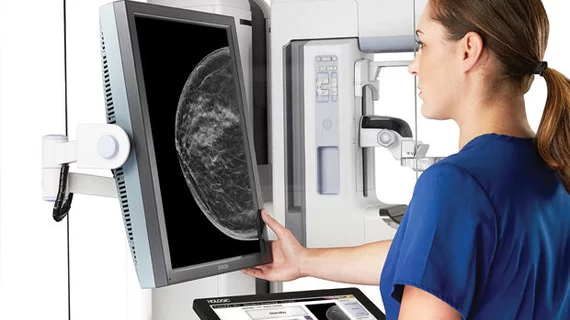Can technologists’ alerts help radiologists detect breast cancer on mammograms?
New research published in Radiology suggests having a second pair of eyes on screening mammograms may not help identify cancers.
The study tested the Dutch breast cancer screening program’s “warning signals” from technologists and the potential impact on recall and detection rates. The authors assessed what impact these signals might have on radiologists’ image interpretations, as well as when the optimal time to present them might be.
The study took place from September 2017 to May 2019. On alternating months, radiologists blinded and unblinded to warnings read the screening mammograms of 109,596 women.
Cancer detection rates remained consistent among both groups. However, radiologists blinded to technologist alerts had lower recall rates (2.1% versus 2.4%), as well as higher positive predictive values (30.6% versus 26.2%) when interpreting the images.
In an editorial published alongside the study, Solveig Hofvind, head of BreastScreen Norway and professor at the University of Tromsø, Faculty of Health Sciences, and co-authors commented on the possible drivers of the results.
“One of the most likely reasons for this phenomenon is the bias introduced in the human interpretive process by early warning signals. Radiologists likely focus on areas marked as suspicious by an independent reviewer—whether human or computer—with a higher likelihood of calling back women with mammograms marked as suspicious," the authors noted.
As for the other aspect of this study—determining the ideal time to introduce image alerts—the researchers suggested that signals should be introduced after independent examination, so as to avoid interpretive bias. At the same time, they admit additional research needs to be conducted before protocols are set.
“The optimal timing and approach for incorporating early warning signals from emerging AI tools in both single- and double-reading environments remain to be determined and are open, critical areas for further research,” the authors wrote.
You can read the full study in Radiology.

